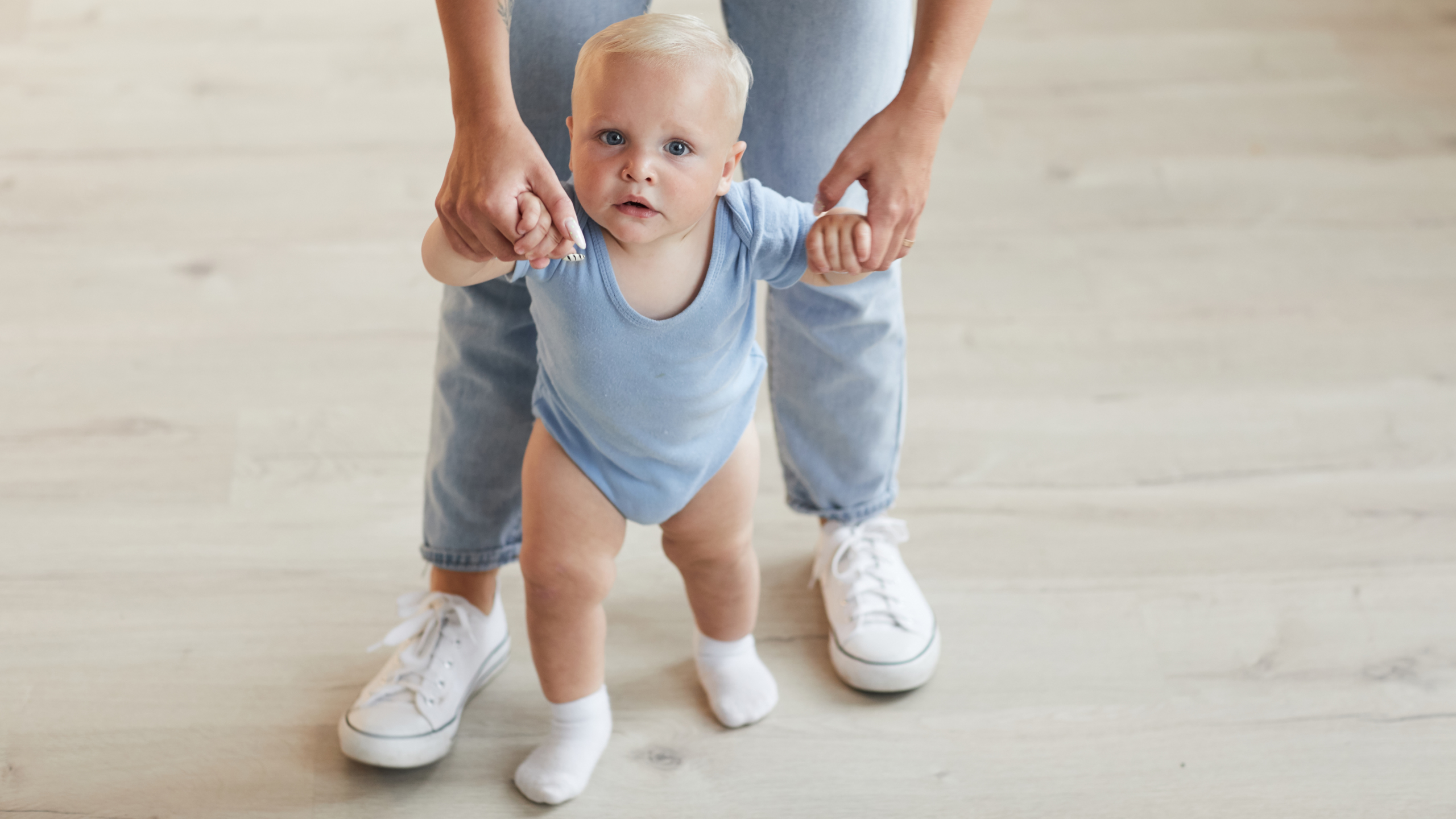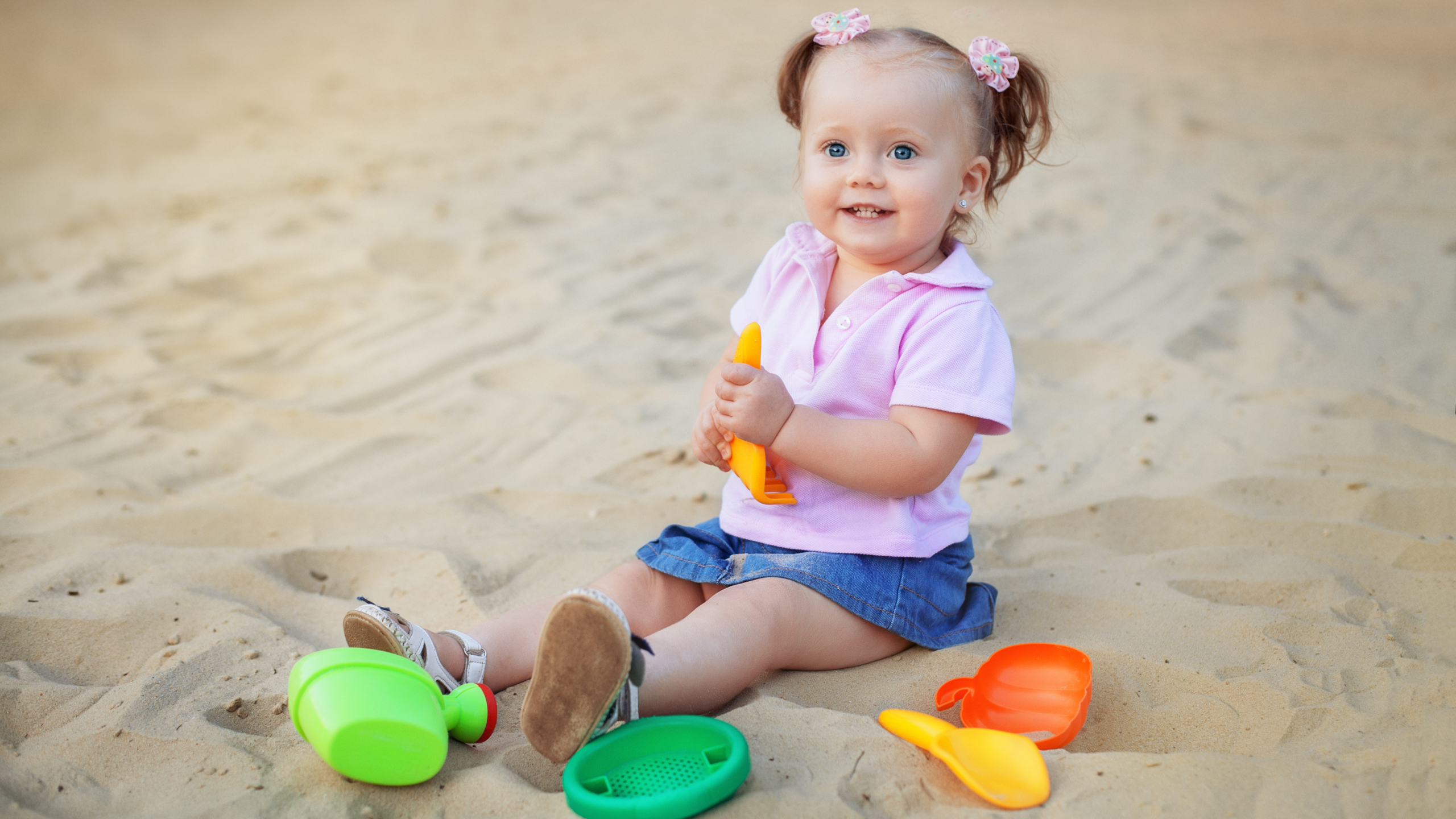
Eight milestones of babies have been identified and extensively researched. These are listed below and in this article, these 8 milestones will be mentioned:
- Kaba motor fonksiyonları
- Fine motor functions
- Perception
- Cognition
- Verbal communication
- Social relations
- Self-regulation
- Emotional development
Gross Motor Functions
During the first three years, babies progress from beings with little body control to being explorers who can roll, sit, crawl, stand and walk. They learn to keep their balance, throw and catch objects. When this happens, gross motor development begins.
Newborns have motor reflexes to interact with their physical environment. Movements they make on their own are also possible, but they can’t quite adjust them yet.
In the first weeks of life, babies learn to hold their heads in a stable position without support before they learn to lift their upper body while lying on their stomachs. Over time, their legs and arms become stronger, and they soon learn to stand up on their own by holding onto furniture. Once in a standing position, they practice maintaining balance without the support and then begin walking.
In their second year, they look for new challenges, such as climbing stairs, walking backward, crouching back up, and standing on one leg. But it’s usually not until their third birthday that kids reach another important milestone, which is jumping.
Fine Motor Functions

Fine-tuning of finger movements and coordination of finger, wrist, and arm movements allow babies to manipulate objects effectively. They begin to effectively use tools used to draw, dress or eat.
Newborns are born with a grasping reflex: all fingers immediately close around objects that touch the palm of the hand. Grasping different objects in this way, the baby quickly learns that finger positions must be adjusted to the size and shape of an object.
When babies start controlling hand movements at two to three months of age, they learn to use their thumb and four fingers to keep things from slipping. After a while, they learn the “scissors grip” using only the thumb and forefinger to hold very thin objects such as hair.
Perception
Perception in all areas except vision is already well developed from the moment we are born. Babies feel pain, are sensitive to touch, and can respond to changes in body posture. They can smell and taste even minor differences in scents and liquids. They can also hear well. Babies are quickly learning how to combine the knowledge that comes from different senses.
Young infants respond favorably to the gentle touch of their skin, but negatively to painful stimuli or sudden changes in posture. They show more movement when they are cold and move away from their heat source when they feel warm. They show disgust in their facial expressions when confronted with things they don’t like to smell or taste (for example, spoiled food), but respond positively when they smell or taste things they like (for example, breast milk). Regarding hearing, positive reactions are observed in the child, especially when a familiar person speaks softly and melodiously.
Cognition
Cognitive development is concerned with basic skills (e.g., attention, classification, and memory) and higher-order skills (e.g., symbolic thinking necessary for language acquisition, tool-effect analysis to establish multi-step goals, causal reasoning necessary to find explanations).
Babies learn how to control their attention, categorize what they perceive, and memorize objects and events. They understand goal-directed behavior and expand their causal and functional knowledge of objects. This allows them to solve problems.
While newborns still automatically respond to external stimuli, their attention gradually improves over two to six months. With age, they can use their attention to focus more and keep the attention high for longer.
When babies reach the age of two, they pass another milestone and realize that they may need to do something else first to reach a certain goal. For example, they learn that glass is needed to drink water. At the same time, they learn to interpret the meanings of gestures, words, or other symbols.
Verbal Communication
Understanding language precedes language production. Generally, babies understand and produce very short verbal expressions, then gradually learn to put together syllables, words, and sentences. From birth, babies recognize their mother tongue. For up to eight months, they also remain sensitive to phonemes of all other languages. Later, perceptual narrowing leads to a loss of sensitivity to languages they do not hear regularly. Nine-month-old babies identify words one by one and show the first signs of true language understanding while listening to a continuous stream of words.
Interestingly, two- to three-year-olds still have trouble interpreting negative sentences. “Do not do that!” will not be understood by the child, while “Drop that!” will be understood. They also have difficulty understanding long sentences that contain subordinate or passive forms.
Social Relations

Babies are social beings from the very beginning. They communicate and imitate, share information and attention on objects with others, exhibit prosocial behavior, and play cooperatively. The quality and complexity of these interactions increases as they grow.
Newborns are particularly interested in other people and soon engage in nonverbal social interactions. This helps babies distinguish between their parents and other people. Babies see their parents as people they trust and will protest if they leave the room.
At three to four months of age, babies can follow other people’s gazes. At about nine to 12 months, this behavior leads to called joint attention when both individuals focus on the same object.
Another form of social learning is imitation. Imitation plays a central role in early childhood. Toddlers learn a lot about our culture by observing and imitating others.
Self-regulation
Self-regulation refers to the ability to regulate mental states and behaviors, including attention, thoughts, feelings, and needs. Early childhood is a critical time for this milestone, as caregivers gradually reduce helping and support children’s emerging self-regulation skills.
Self-regulation has a physical, mental, and behavioral dimension that includes regulation of sleep and attention, emotions and basic needs, and impulse control. These different skills begin to emerge in infancy but progress further in later childhood.
Even newborns can sometimes calm themselves down and regulate their attention without external help, thus forming a basic capacity for cognitive and emotional self-regulation.
Emotional Development
In emotional development; we first learn about bodily feelings, then basic emotions, and finally complex emotions such as guilt, pride, or shame that require self-knowledge and knowledge of social norms. Emotions become more distinct and conscious with age. Cognitive development and language development, including mental speech, play a critical role in emotion experience and emotion expression.
Newborns can express basic emotions such as hunger, fatigue, pain, or disgust, as well as psychological states such as negative or positive arousal, curiosity, pleasure, and excitement.
Basic emotions differ after a while. Babies can experience varying degrees of discomfort, anger or fear, pleasure or surprise, and develop loving attitudes towards certain people or objects.
Parents and trainers who want to join the Pre-Education family or want to get detailed information about our services can reach us by filling out the application forms on our website.
